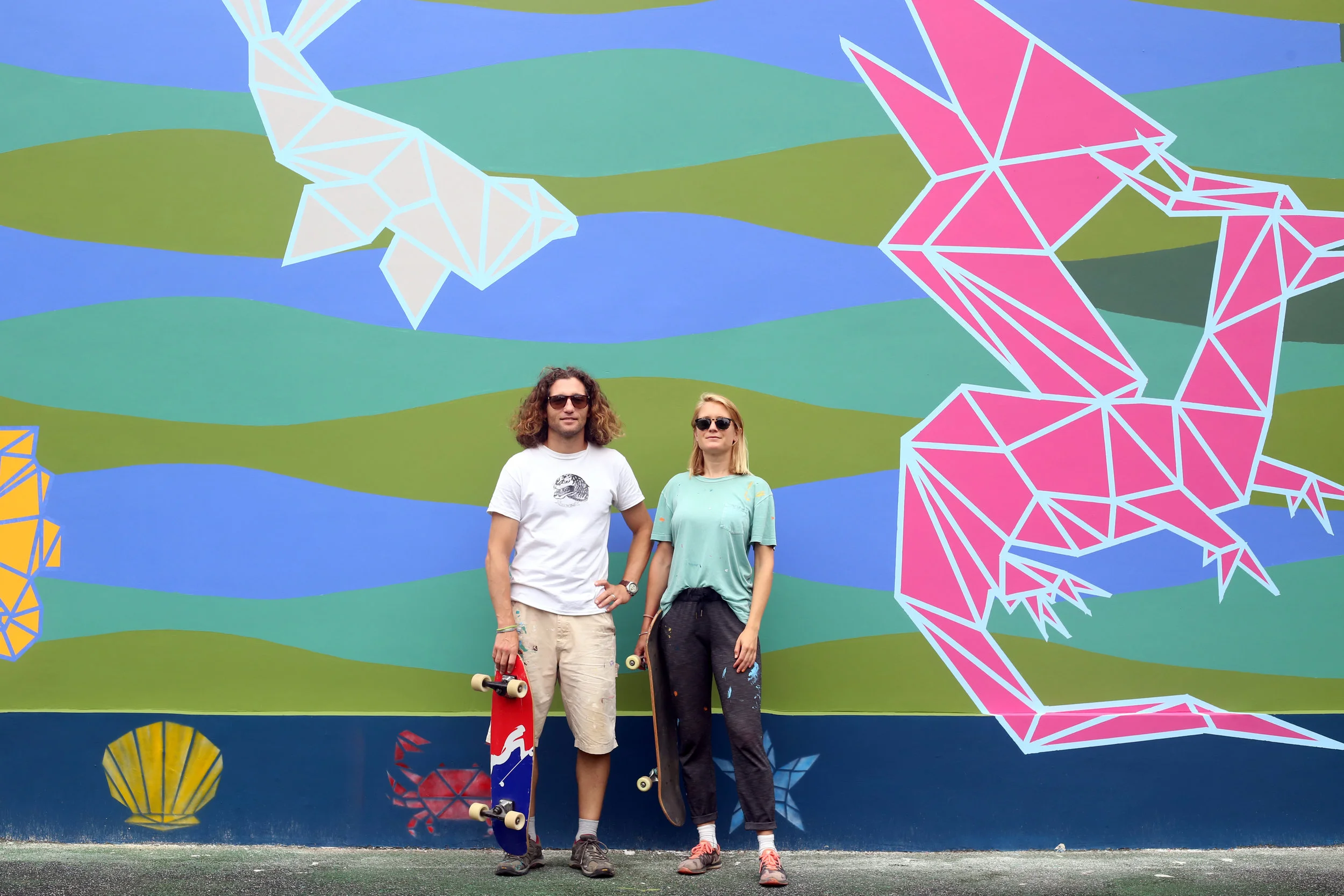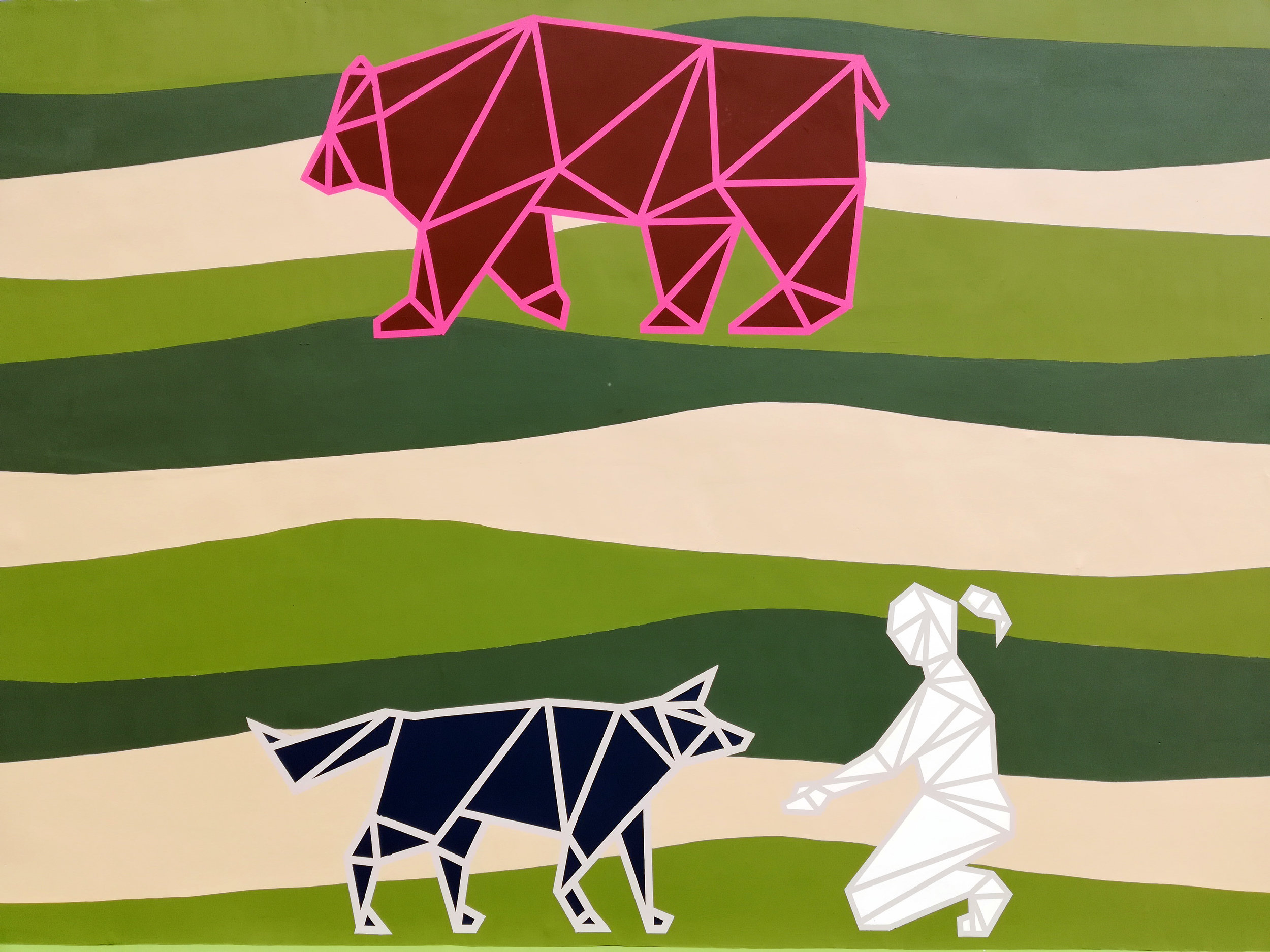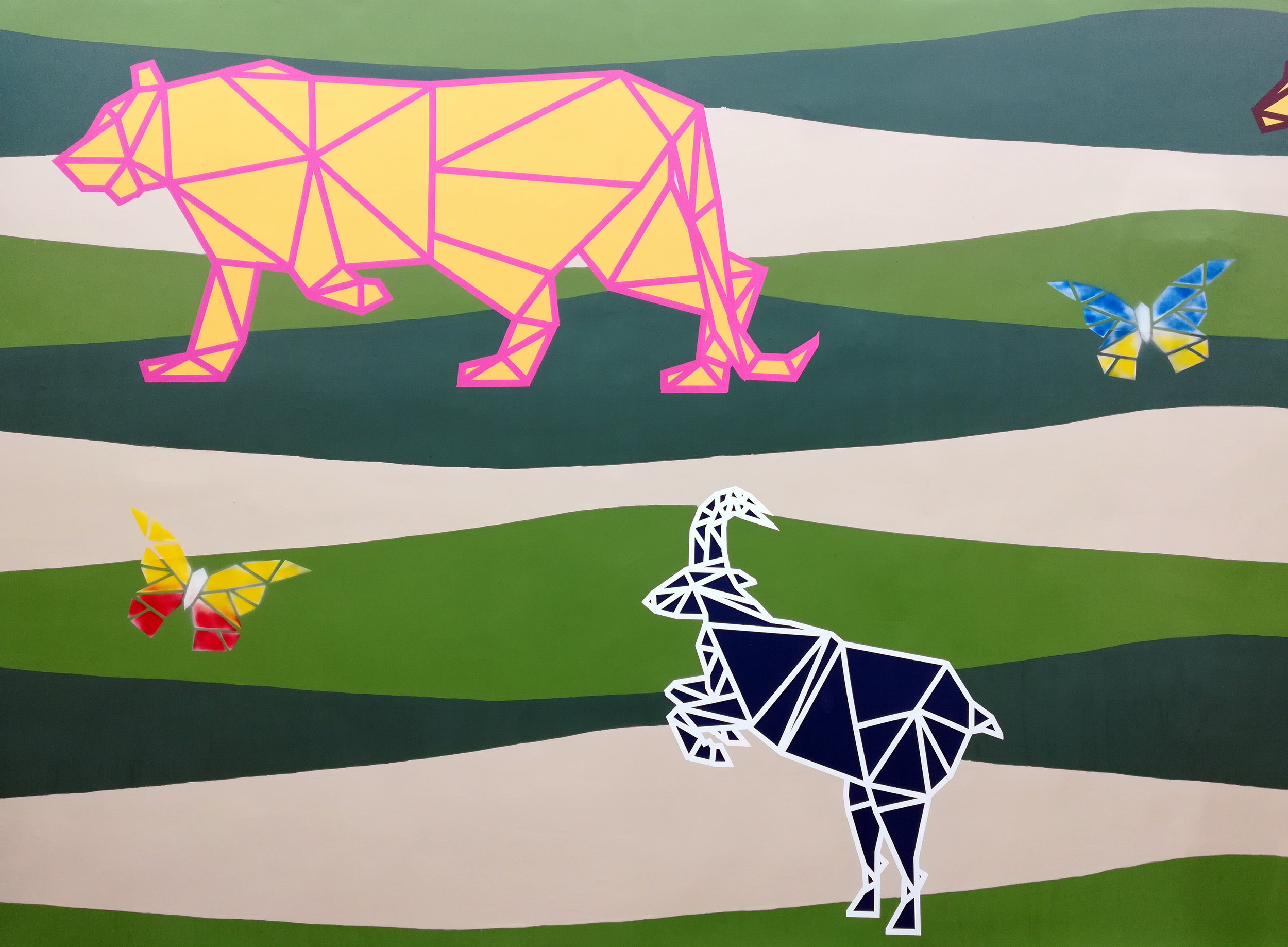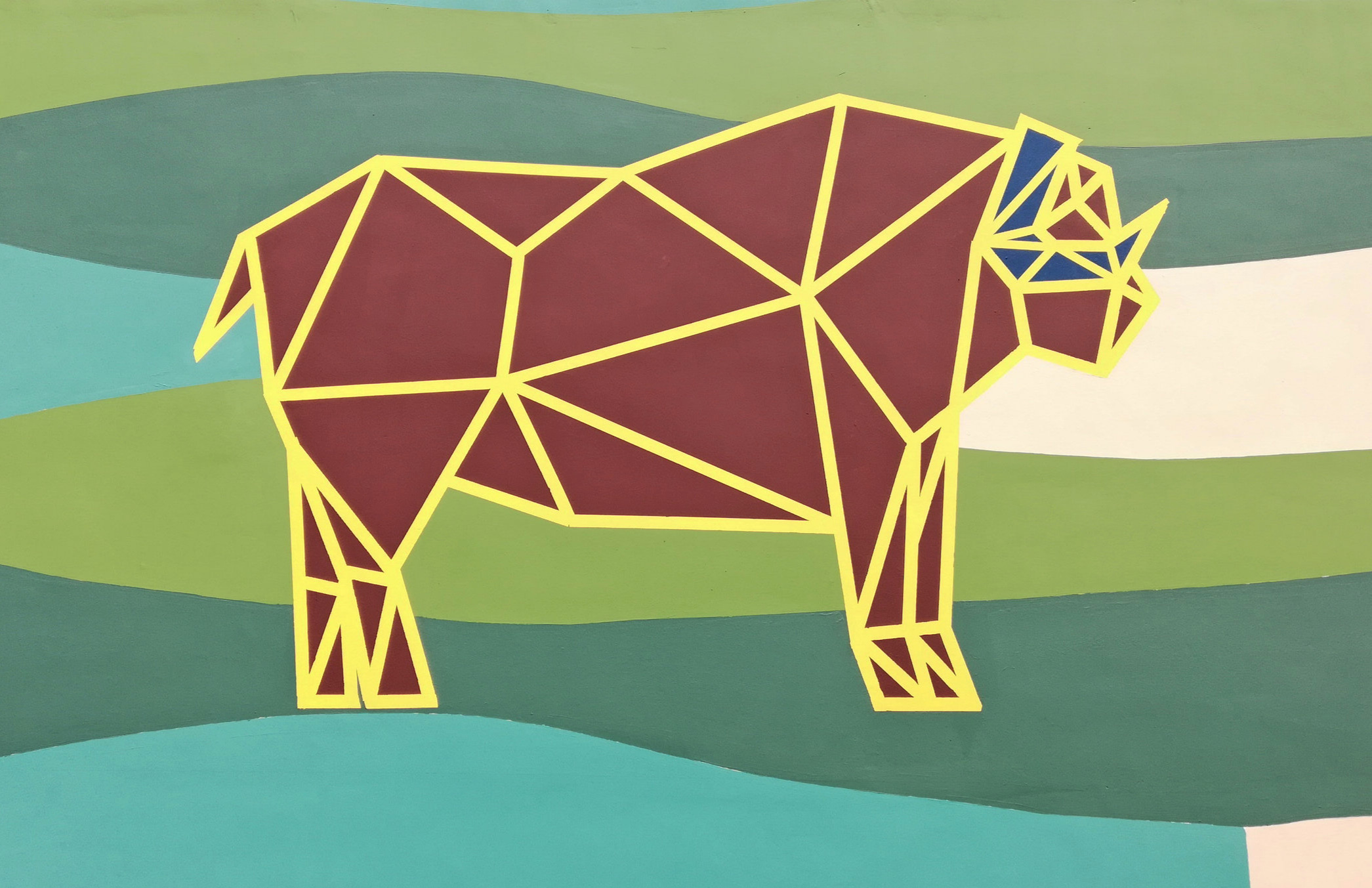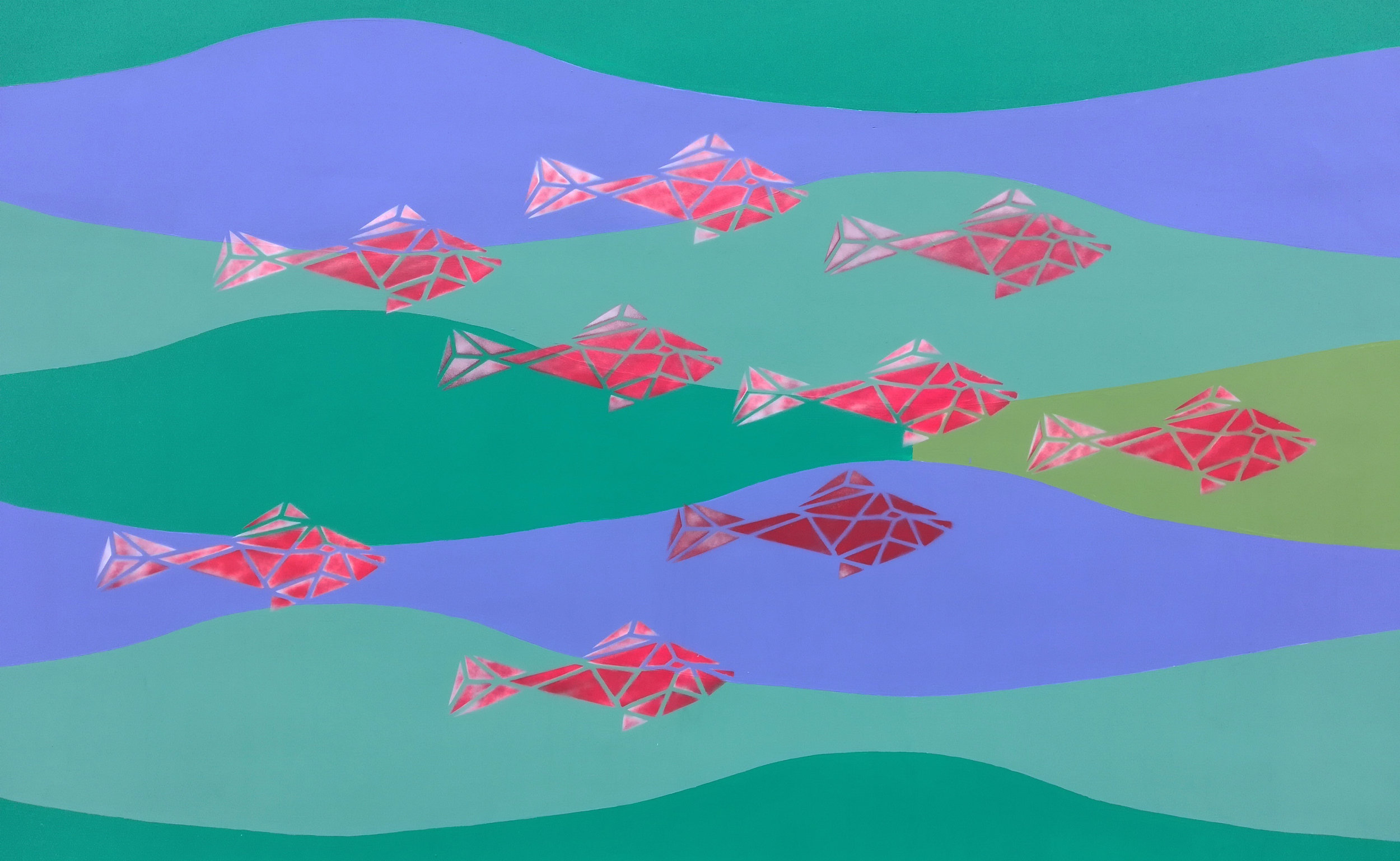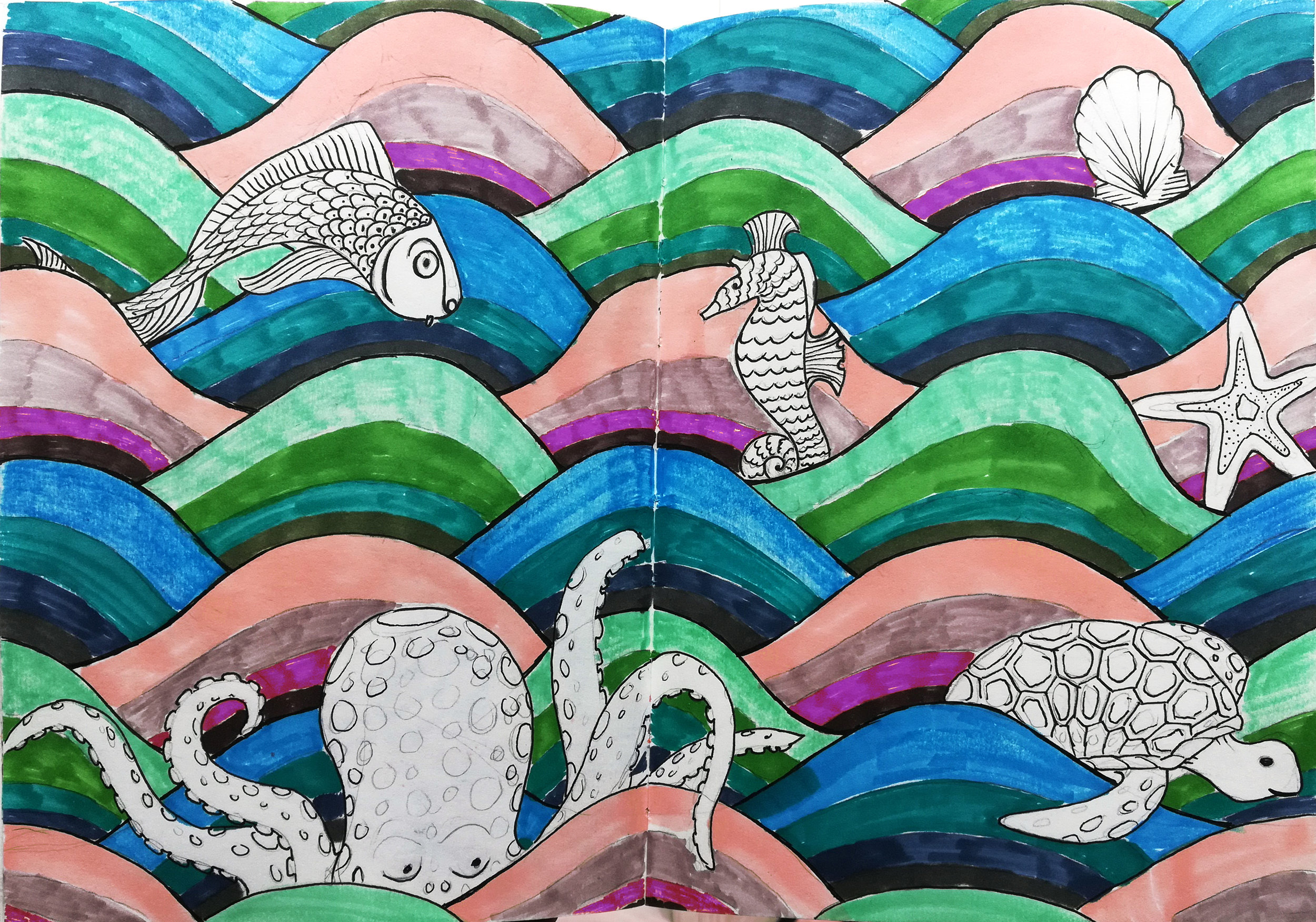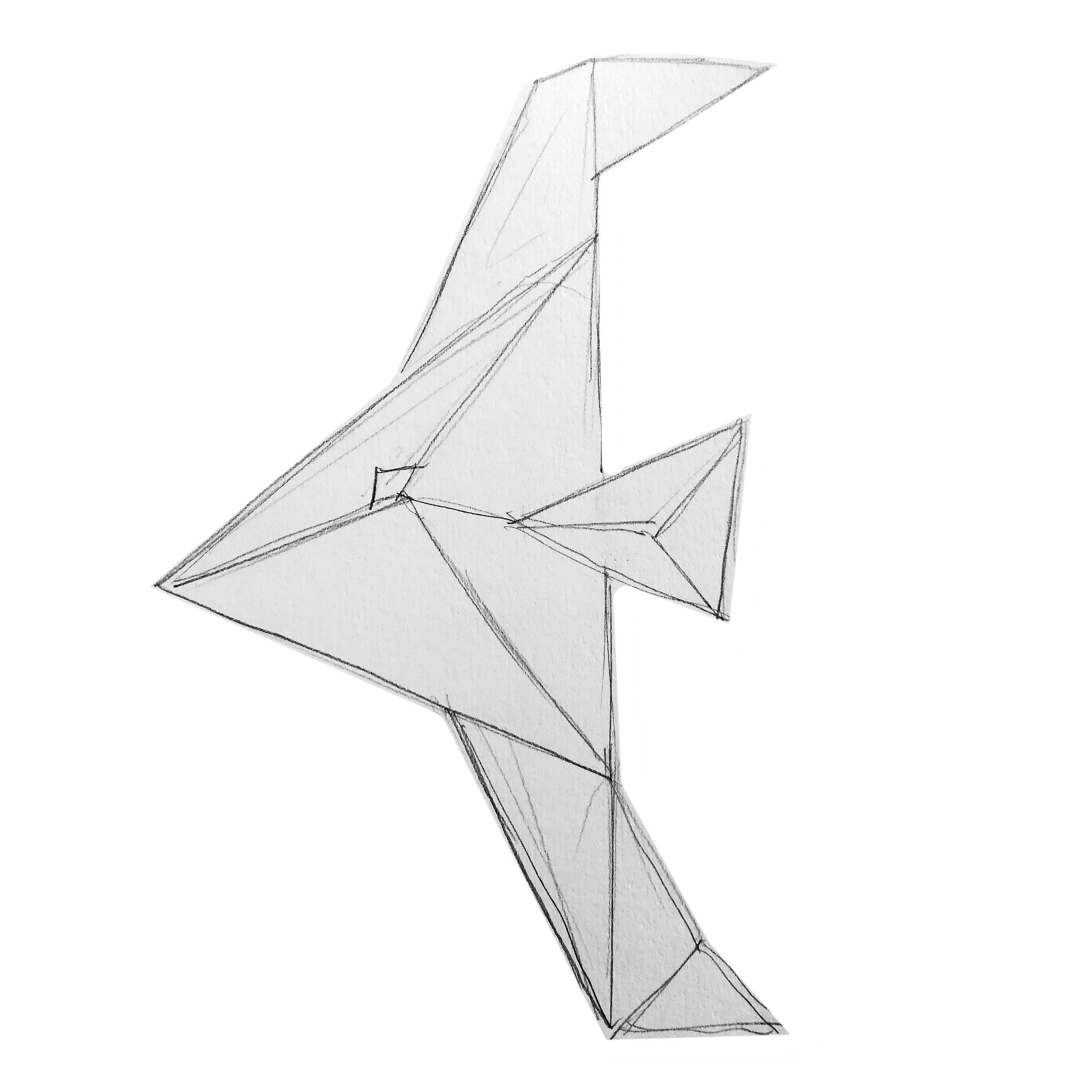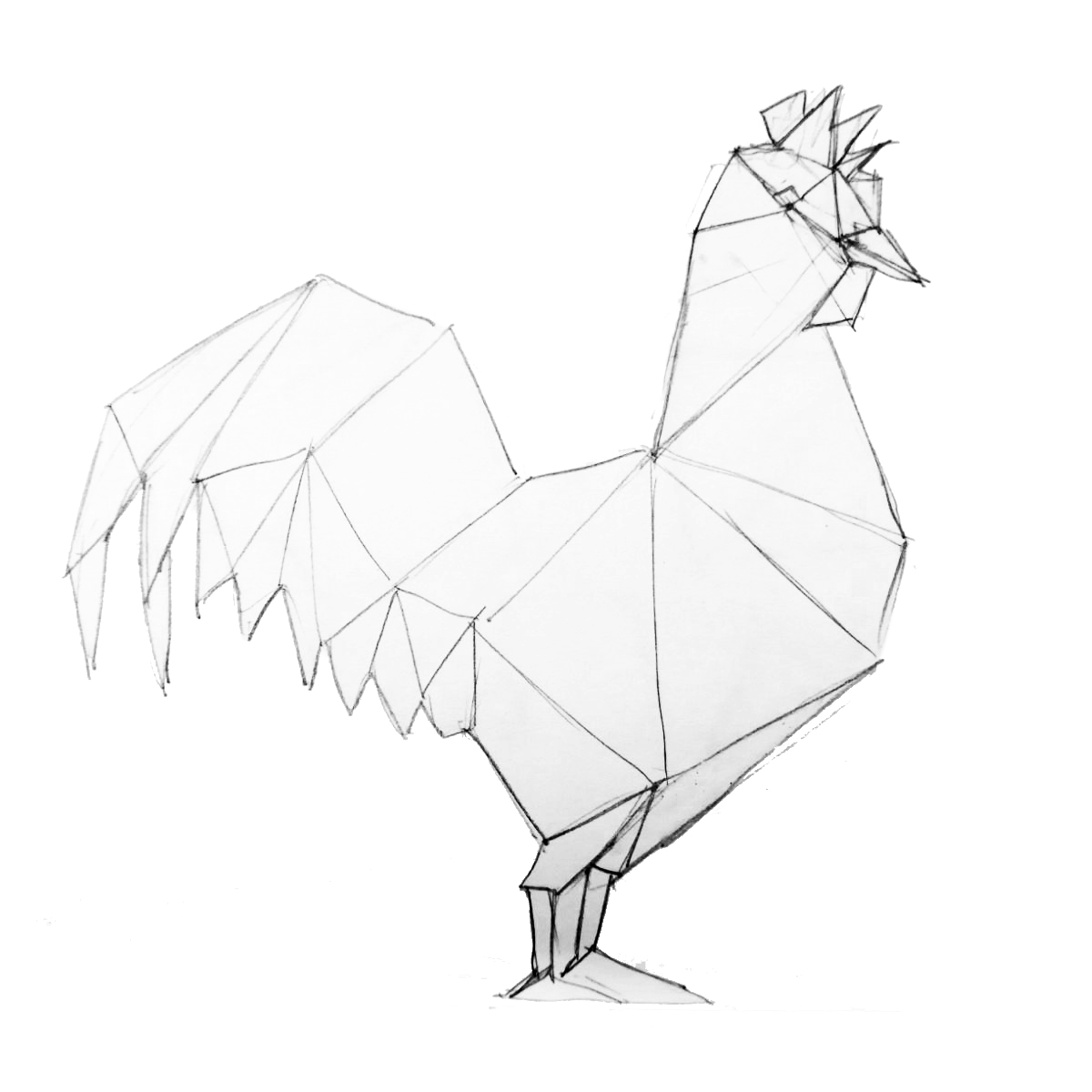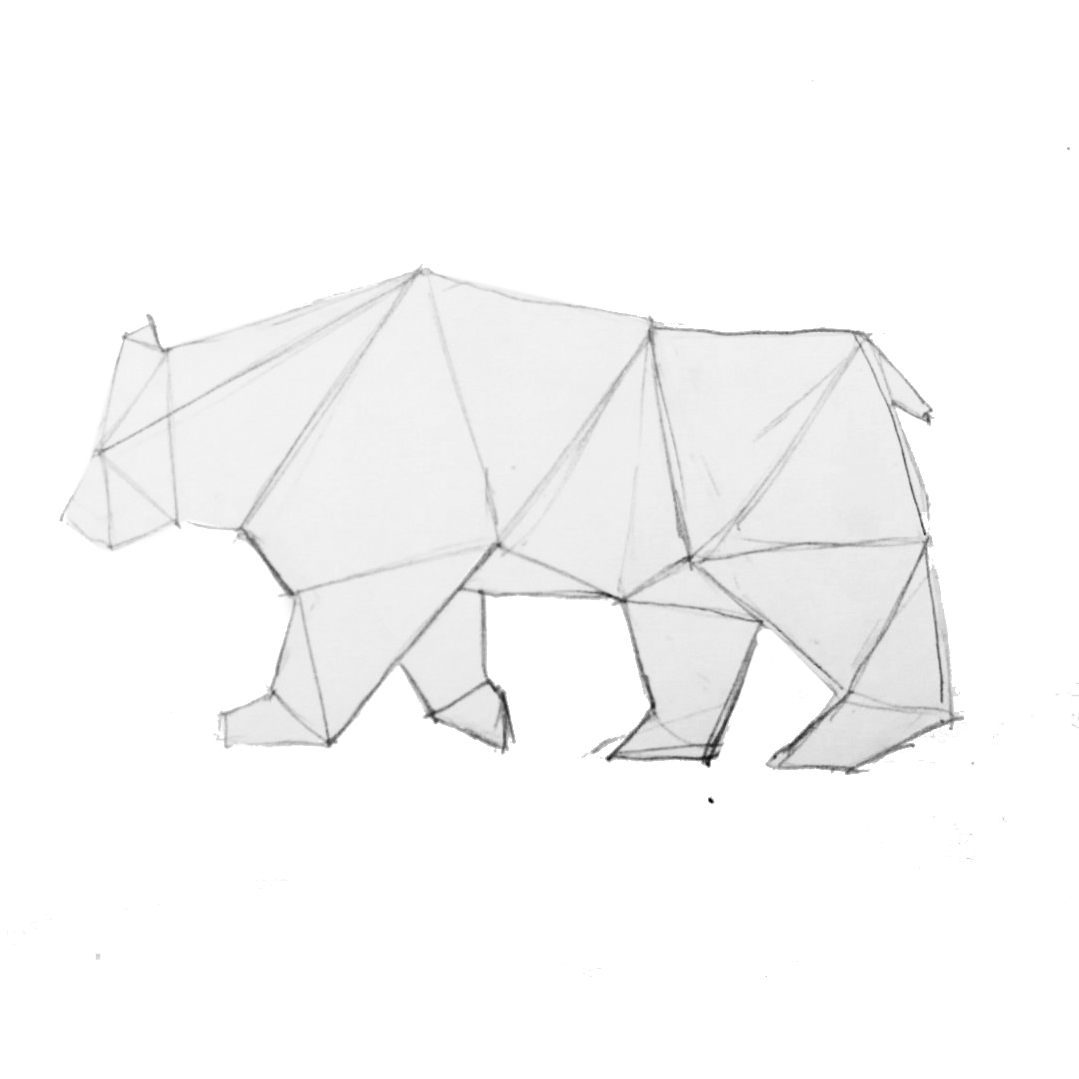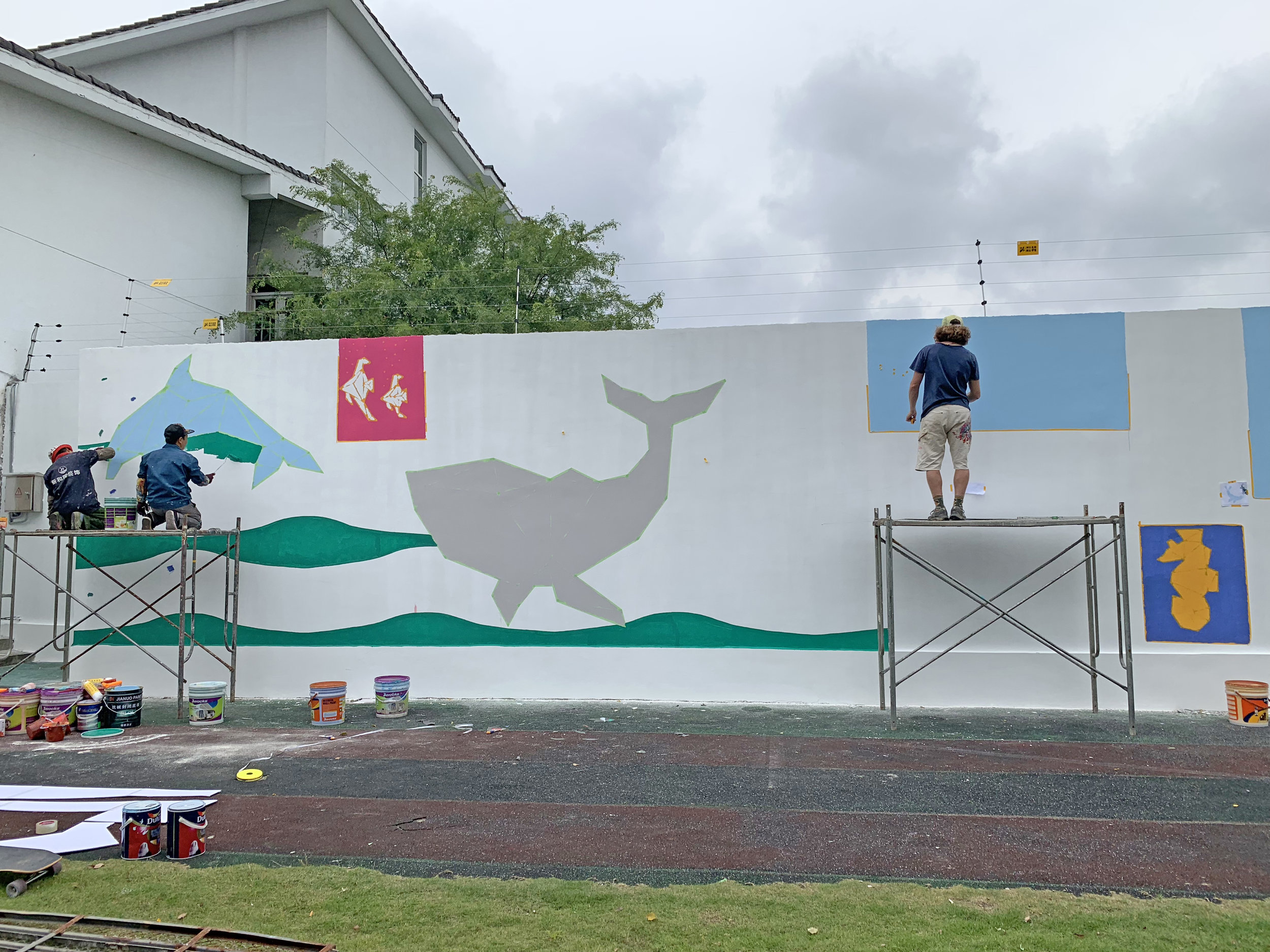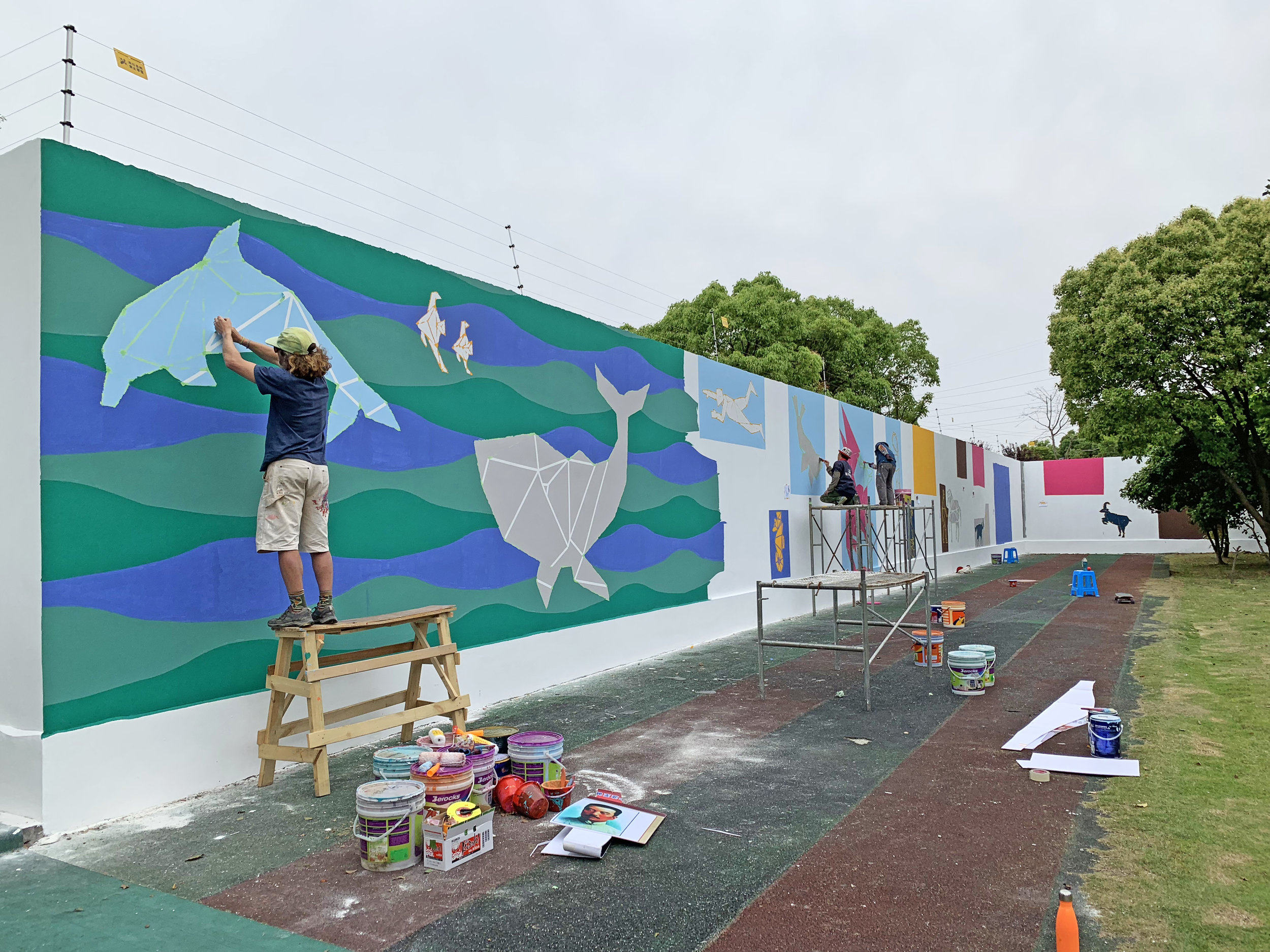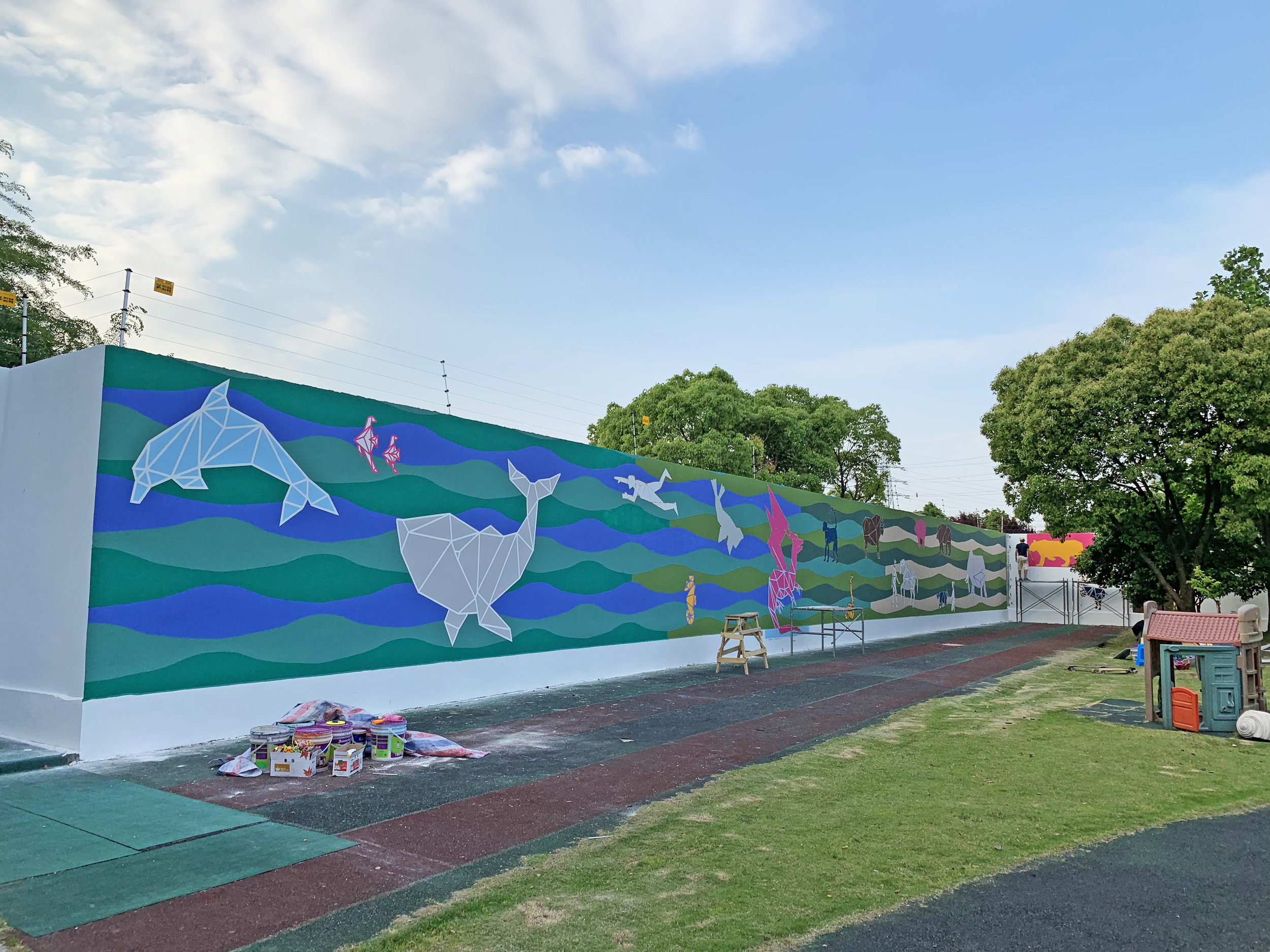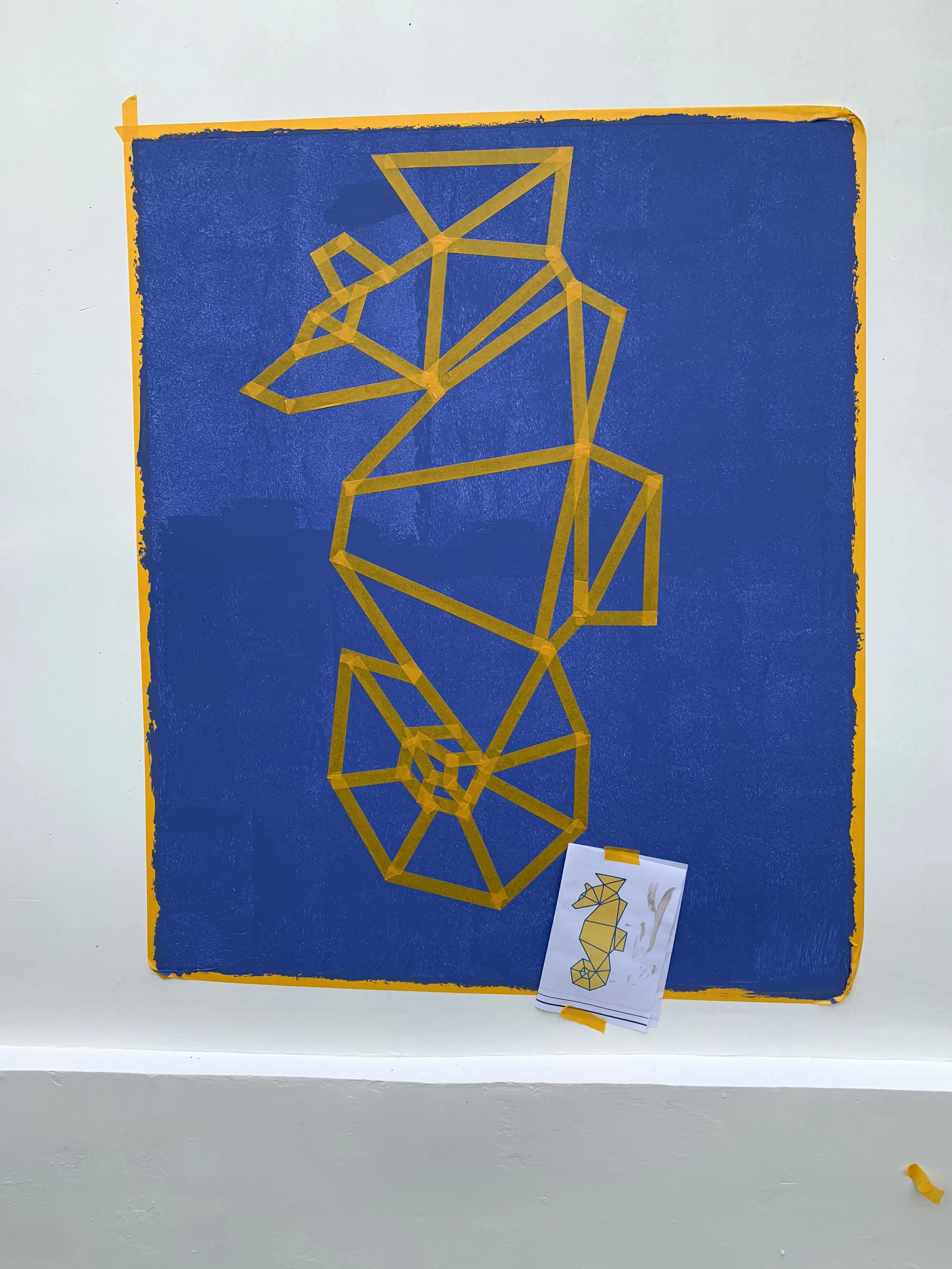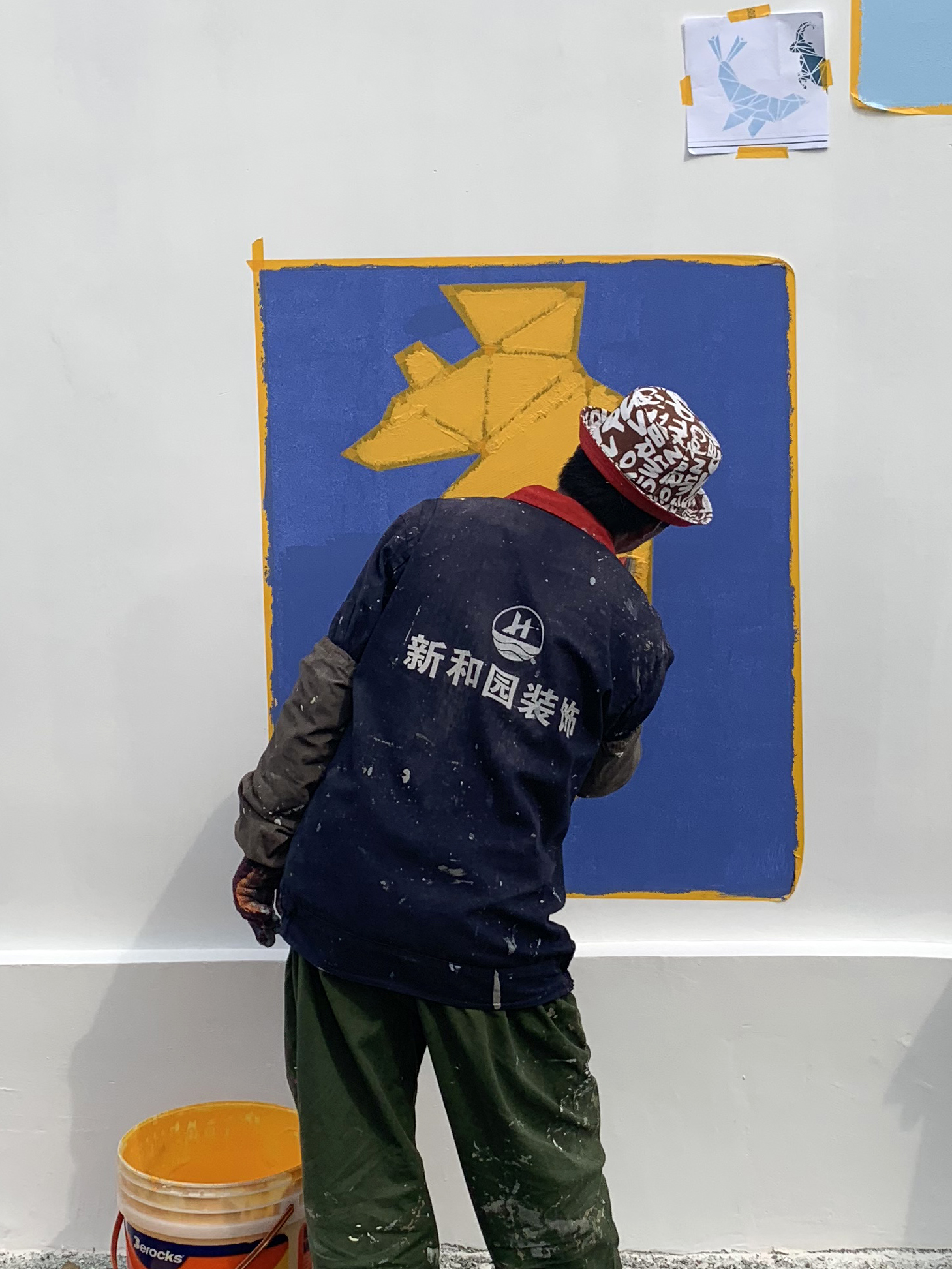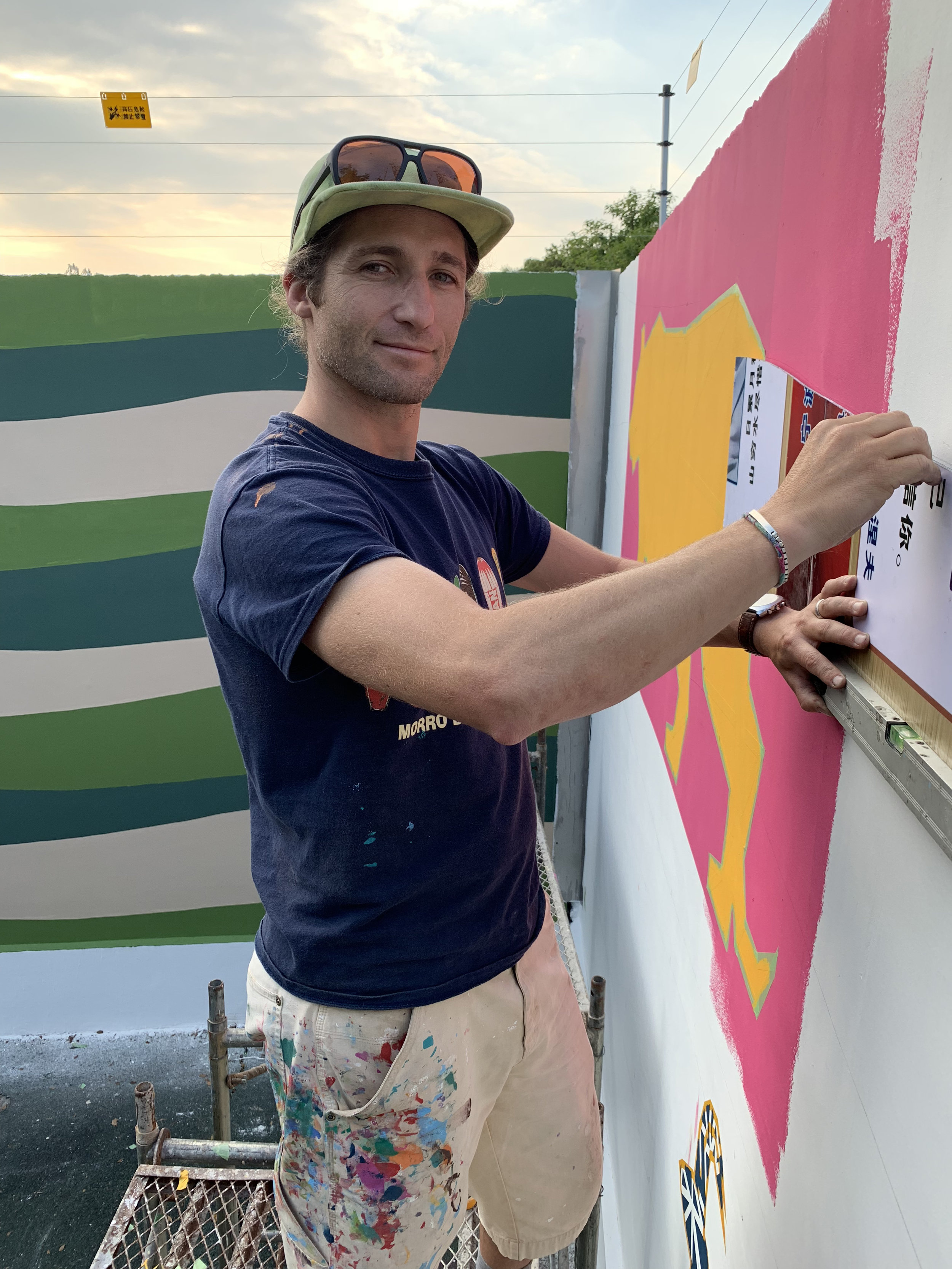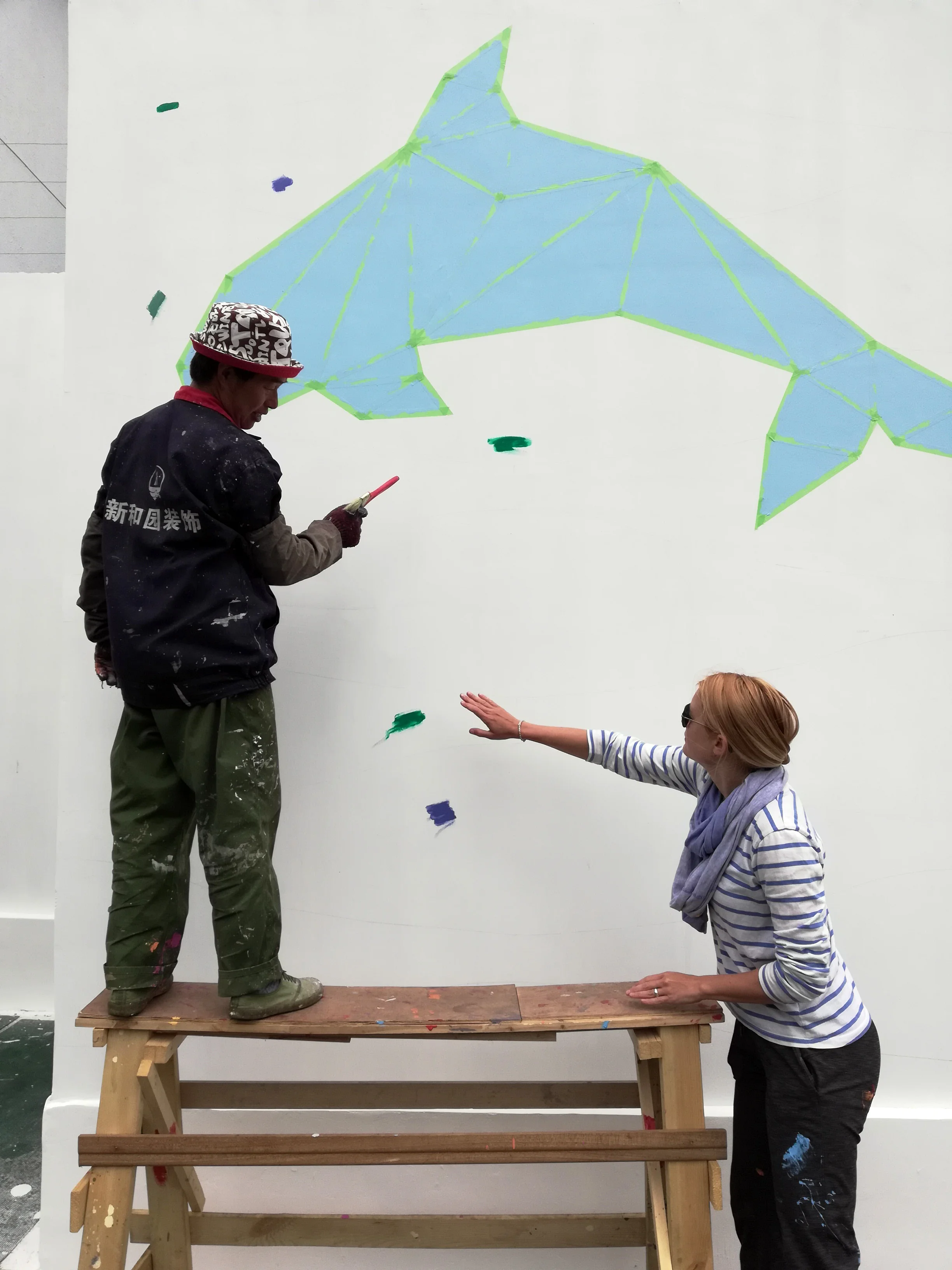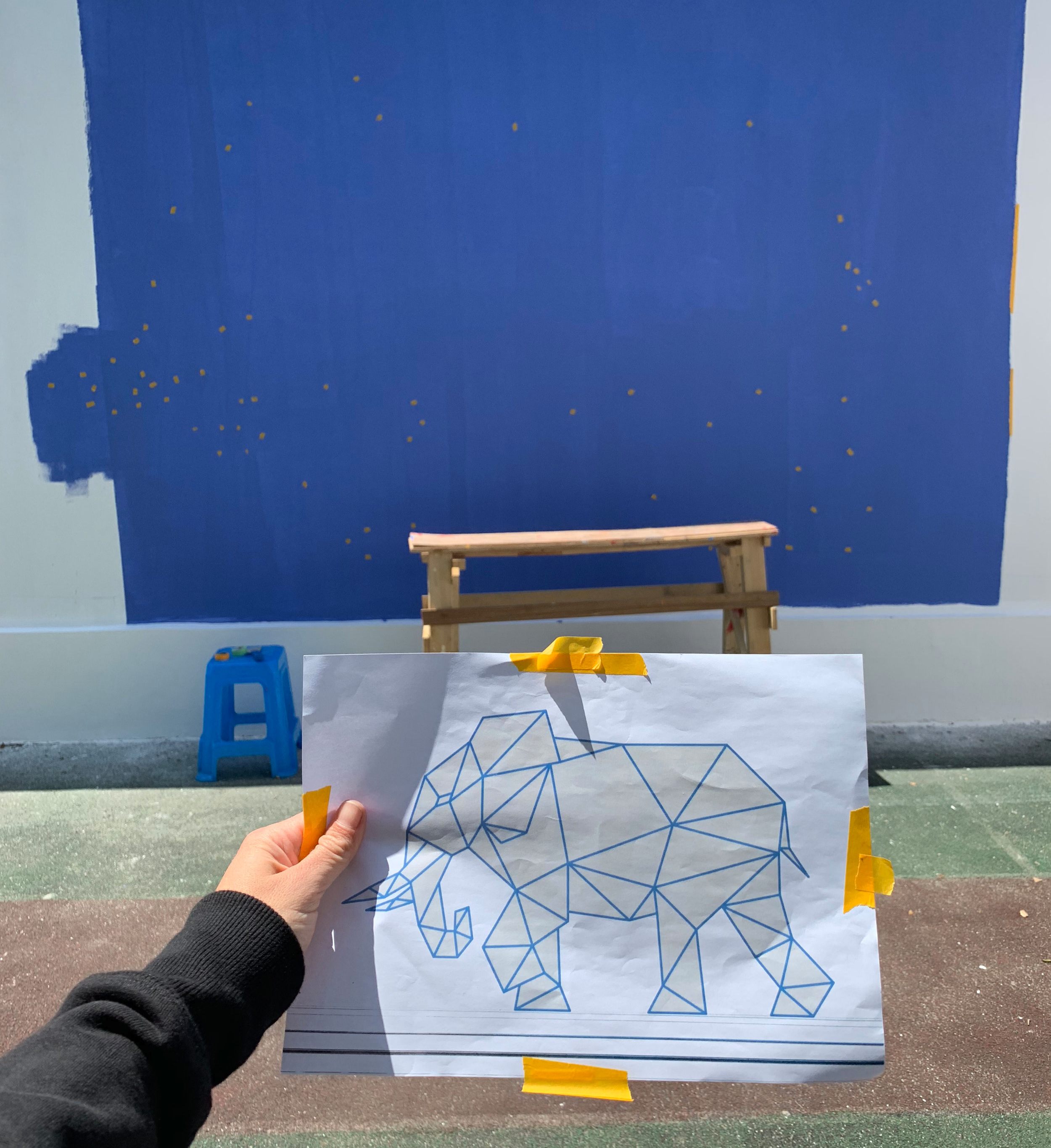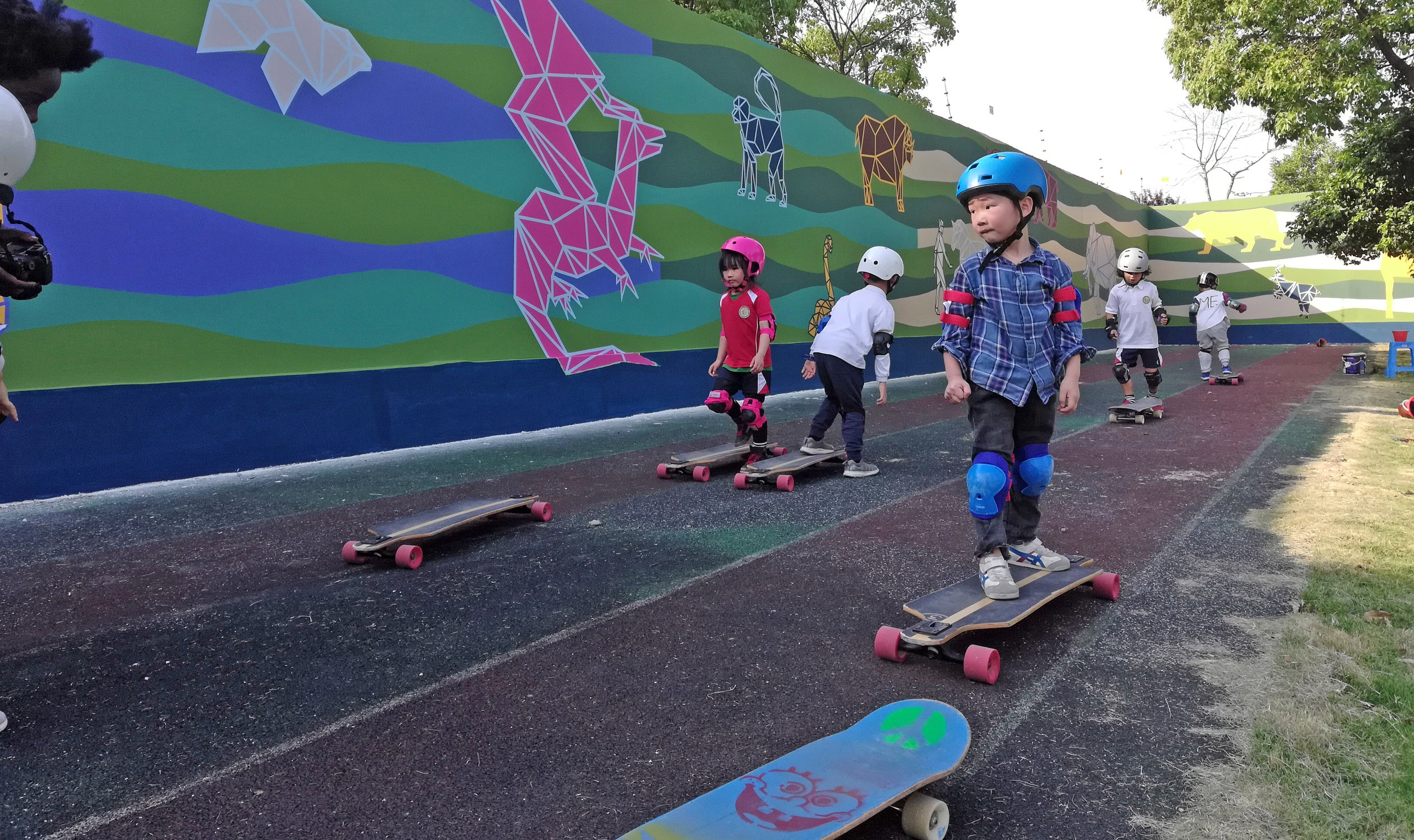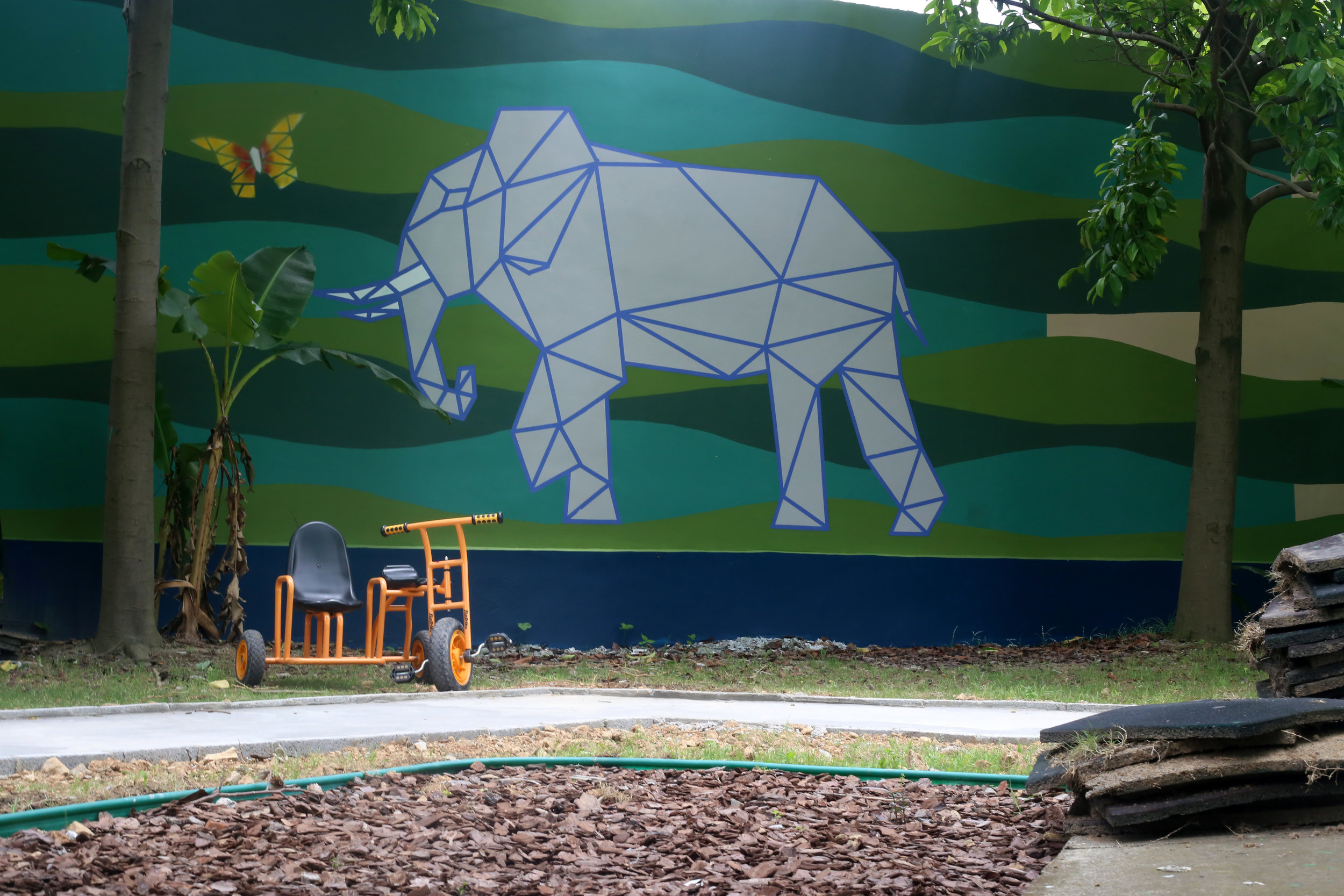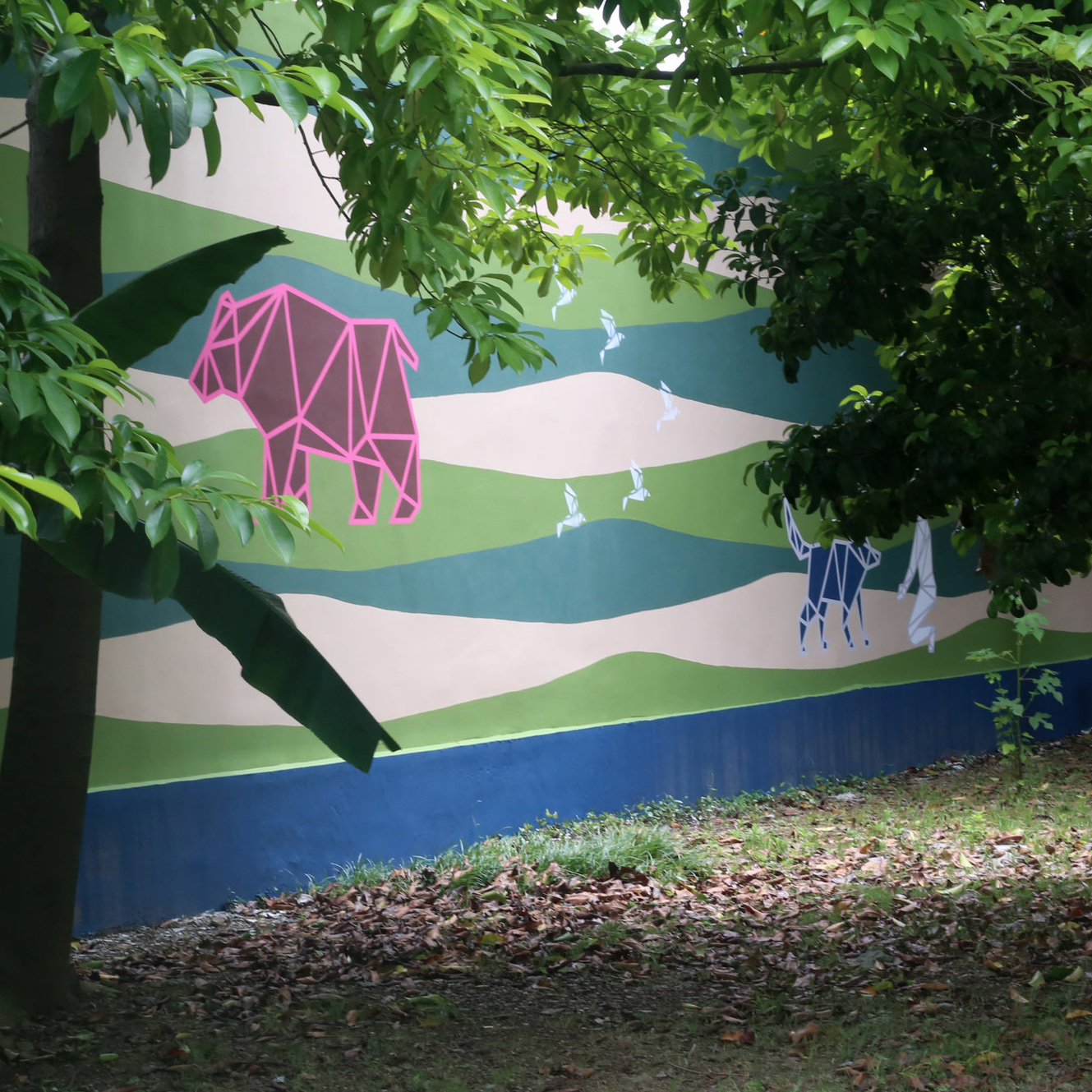Kindergarden Wall at the Ningbo, Zhicheng International School
Wall length: 143 meters (469ft.)
Wall height: 3 meters (10ft.)
Total surface area: 429 sq. meters (4,617 sq. ft.)
Time to complete: one week
Completed painting. Photo by Coretta Jarteh
Completed painting. Photo by Coretta Jarteh
Process drove the design of this mural, above you can see the finished wall, but it took a lot of revisions to get to this stage. Shortly before we arrived in Ningbo for our artist residency we got some pictures of the wall that surrounds the kindergarden and the simple suggestion that the painting should have animals in it. There was no time for elaborate planning or having complex templates built we would have to resort to “on-the-fly” decision making in order to cover the massive 469ft. wall in under a week. On our flight over I did the sketch at right showing sea creatures swimming in colorful undulating waves. I had done a mural of Chinese Zodiac animals in my last visit to the school and there was some confusion because of the abstract way I like to draw animals. This time I made sure to give more realistic details to the animals making them easily recognizable.
Presentation One
The idea for a background pattern of waves and sea creatures was well received but it was said that I had drawn the animals in a “more Chinese style.” When I explained that I wanted the animals to be recognizable the response was, “we want this painting to be in your style.” As a designer this is a rewarding thing to hear. When a client puts their faith in your ability to show them something new you feel obligated to deliver. I also believe that from an educational standpoint for kindergardeners it is best to represent things in an abstract way leaving room for their imaginations to work, encouraging them to rely on proportion, form and color to make their own conclusions about what they are seeing.
Presentation Two
Based on the input from the first presentation we developed a set of land and sea animals by simplifying their forms into geometric shapes that would be easy to create using a taping technique on the wall. The background shifted color and stretched to shift from blue and sea green waves into beige and olive rolling hills. This became the landscape for the animals to inhabit.
Presentation Three
Chen Hui, the owner of the school, was happy with the sea and land animals but wanted to make sure all the animals of the Chinese zodiac were included as well as showing humans interacting with the animals to represent them living in harmony. All of these ideas made the painting better but it meant developing over 25 unique animal designs that we would then have to paint at scale on the wall some of which we painted more than once. We spent the next day making thumbnail sketches of geometric animals. Below you can see the final rendering with all the animals placed into the morphing landscape in the background, which is what we got approved to start painting.
Computer rendering of mural proposal.
The Painting
Now that the painting concept was finished we needed to figure out how to get it onto the wall. To achieve the outline effect of the animals we roughed out where we wanted them to be with tape and had the painters fill in the boxes. Next we carefully placed tape at the nodes of where the lines of each animal would intersect and then connected the dots with tape. Finally the painters would fill in the the colors inside the tape and we would peel it back. It was exciting to remove the tape and reveal the animals that existed in between the lines. For the background we made 3 different sized wave templates that we placed and traced along the entire wall creating pattern that the painters filled in. It required a bit of math and careful planning to make sure the patterns and colors started and stopped where they were supposed to.
The Last Step
After the larger animals were finished and the background pattern filled in we spent a whole rainy day making stencils out of some old foam core posters that were being thrown out. We then used spray paint to add the school of fish and along the bottom of the wall the shells, crabs, starfish, rats, roosters and rabbits. Because these creatures were all repeated we used the stencils with spray paint to add them at the end.
The Results
While we were painting kids would come by and point at the animals and identify them by name in English and Chinese. They would point curiously as they walked around in the trees behind the building where elephants and tigers were peeking out at them. The wall begins out in the open and then snakes behind a small stand of trees giving glimpses of the animals and creating a magical forest of animals. The wall became a backdrop for all the activity of the children playing in the trees, skating on the track or dancing in the open square. It felt incredible to transform a space of this size in the course of a week and we could never have done it without the support of our amazing painters or the enthusiastic support of the students and adminsitrators.

